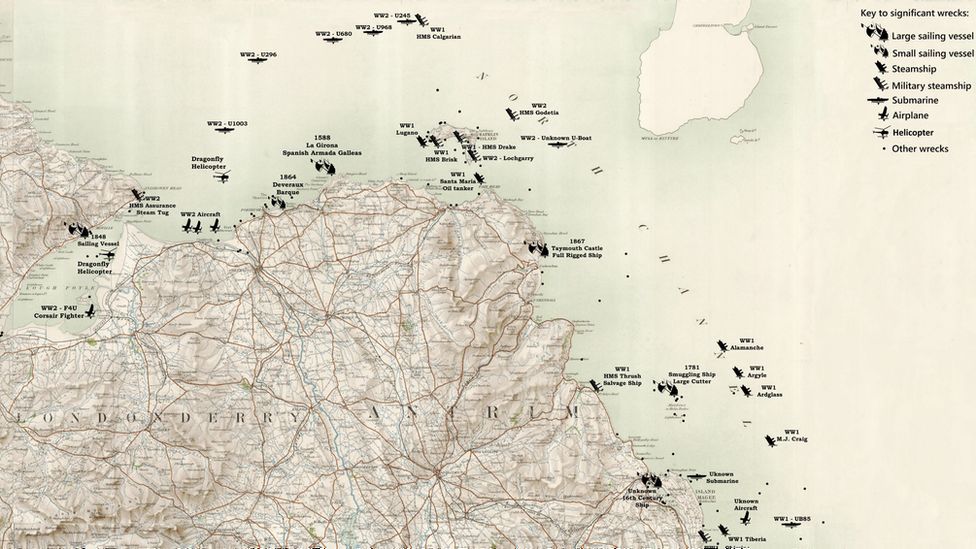-

-
-
Loading

Loading

Colin Dunlop is a civil servant with a unique job. Instead of working in an office, his office is the sea. His responsibility is to locate, map, and protect Northern Ireland's hidden marine heritage, which includes sunken ships and crashed planes. One of the wrecks he is currently focused on is the SS Lochgarry, a merchant vessel that sank off the coast of Rathlin Island during World War Two. Colin and his team use a combination of old maps, historical accounts, local knowledge, and sonar to find and record these wrecks. So far, they have located 384 sunken ships and crashed planes along Northern Ireland's shoreline. The wrecks range from a Spanish Armada vessel from the 1500s to wooden sailing merchant vessels from the 19th Century and World War One and Two vessels. In addition to shipwrecks, Northern Ireland's coastal waters also hold a rich archaeological record that spans 9,000 years. This record includes prehistoric tools, log boats, and historic harbor installations. The Department for Communities' Historic Environment Division and the Department of Agriculture's Marine and Fisheries Division work together to monitor and protect these artifacts. Currently, only 1% of the wrecks have special designated protection under the law. However, officials are working to raise awareness about the historical value of these vessels. Colin, as the project's historic environment adviser, believes that increasing awareness is crucial to protecting these assets. Although most sea divers in Northern Ireland act responsibly, there have been instances of wrecks being damaged or looted. The SS Lochgarry, for example, was a World War Two merchant vessel that was adapted for military use. It was damaged in the line of duty but made a successful return trip with troops before ultimately sinking off Rathlin Island. Colin and his team recently conducted the first survey of the wreck since it received official protection. They used detailed sonar scans to create a comprehensive picture of the wreck, down to 5cm resolution. These scans allow the team to monitor any changes to the wreck over time. Diving is still permitted around the Lochgarry, but visitors are required to follow a "look, don't touch" policy, as any damage to the wreck is a criminal offense. The team emphasizes the importance of these wrecks as heritage assets that connect us to our past.